

History Of Earth In 9 Minutes. Making your Own National Park Geologic Tour.
People of the Bog. Rough-Hewn Land: A Geologic Journey from California to the Rocky Mountains (9780520275775): Keith Heyer Meldahl: Books. Glaciers – “As Cold as Ice” Apocalyptical - Live from the Paramount in Seattle. Explorations Through Time. How Was the Earth Formed? How Was the Earth Formed?
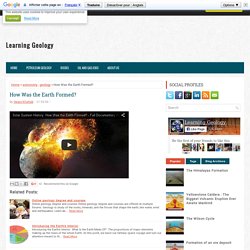
Related Posts: {*style:<ul>*}{*style:<li>*}{*style:<a href=' geology degree and courses{*style:</a>*} Online geology degree and courses Online geology degree and courses are offered at multiple forums. Geology is study of the rocks, minerals, and the forces that shape the earth, like water, wind and earthquakes. Learn ab… {*style:<a href=' More{*style:</a>*}{*style:</li>*}{*style:<li>*}{*style:<a href=' the Earth’s Interior {*style:</a>*} Introducing the Earth’s Interior What Is the Earth Made Of? The proportions of major elements making up the mass of the whole Earth. Study pinpoints when the Galápagos Islands developed their unique ecology. The Galápagos Islands are home to a tremendous diversity of plants and animals found nowhere else in the world.
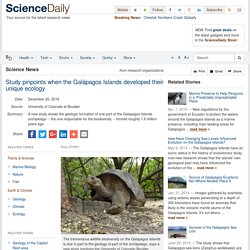
But why this is, and when it all began, remains something of an open question. Now scientists may have at least one more piece of the puzzle. According to a new study out today in Earth and Planetary Science Letters, the geologic formation of one particular part of the archipelago -- the part responsible for the huge biodiversity -- formed, approximately 1.6 million years ago. The lead author of the study is CIRES Fellow Kris Karnauskas, who you might say has a thing for these islands. Geologic History and Evolution of Life. The Earth’s geologic time scale tells a story about the inception of life and the rise and fall of species, showing life is fragile in the face of gradual and sudden changes to the environment.
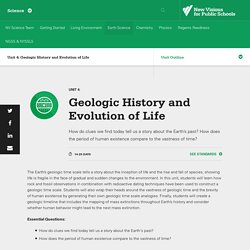
In this unit, students will learn how rock and fossil observations in combination with radioactive dating techniques have been used to construct a geologic time scale. Students will also wrap their heads around the vastness of geologic time and the brevity of human existence by generating their own geologic time scale analogies. Finally, students will create a geologic timeline that includes the mapping of mass extinctions throughout Earth’s history and consider whether human behavior might lead to the next mass extinction. Essential Questions: How do clues we find today tell us a story about the Earth's past?
Which Came First on Earth. The hunt for life on other planets is due for a makeover.
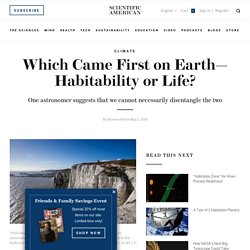
Although it is often confined to planets orbiting in the so-called habitable zone where proximity to their host stars makes temperatures just right for liquid water, many astronomers are beginning to think outside the “Goldilocks” box. Some wonder if previously overlooked mechanisms—including life itself—could broaden the habitable zone well beyond its current definition. Colin Goldblatt, a planetary scientist at the University of Victoria in British Columbia, even argues that life’s ability to alter a planet’s climate poses a new paradox: A planet’s habitability could depend on whether life has already made itself at home there, a situation that would place habitability and life in a baffling chicken-or-egg scenario. Goldblatt has been looking beyond Earth-like atmospheres to see how different concentrations of nitrogen and carbon dioxide might tweak a planet’s habitability.
CollegeHumor - If Jurassic Park Were In Different... Science Store: Product Detail. HS-guide_111415_BORING_BILLION. TheEarthTimelineToiletPaperLesson.pdf. Explorations Through Time. Prehistoric Paradise final project assignment and rubric. Prehistoric Paradise final project assignment and rubric. Geologic time 5e lesson mattox. Geological-Timeline-Activity_reduced. Uncovering Layers of the Grand Canyon. Eighth Grade Geological Time Scale and Fossils. MS-LS4-1 Students who demonstrate understanding can: Analyze and interpret data for patterns in the fossil record that document the existence, diversity, extinction, and change of life forms throughout the history of life on Earth, under the assumption that natural laws operate today as in the past.
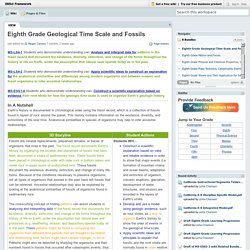
MS-LS4-2 Students who demonstrate understanding can: Apply scientific ideas to construct an explanation for the anatomical similarities and differences among modern organisms and between modern and fossil organisms to infer ancestral relationships. MS-ESS1-4 Students who demonstrate understanding can: Construct a scientific explanation based on evidence from rock strata for how the geologic time scale is used to organize Earth’s geologic history. Sheets - create and edit spreadsheets online, for free. One account.

All of Google. Sign in to continue to Sheets Find my account. History, Travel, Arts, Science, People, Places. Lesson: Patterns in Time. ENGAGE: Fossils over time Introduce students to fossils (this is one approach; see below for an alternative approach): Have some real fossils (and/or plastic copies) of a variety of organisms for students to handle and share, and/or show pictures of fossils; a few models of some prehistoric creatures, like dinosaurs and other early reptiles, would also make it fun.
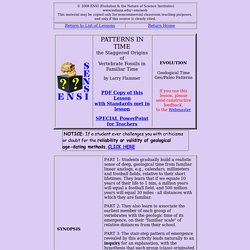
Ask: "If you found these fossils in some rocks, what questions would you ask? [list some of the questions asked, e.g., "what was it? " "when did it live? " "how old is it? "] If possible, tell them the ages of some of the fossils. DETERMINING AGE OF ROCKS AND FOSSILS. THE AGE of fossils intrigues almost everyone.
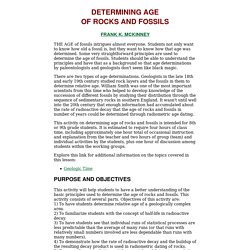
Students not only want to know how old a fossil is, but they want to know how that age was determined. Some very straightforward principles are used to determine the age of fossils. Students should be able to understand the principles and have that as a background so that age determinations by paleontologists and geologists don't seem like black magic. There are two types of age determinations. Geologists in the late 18th and early 19th century studied rock layers and the fossils in them to determine relative age.